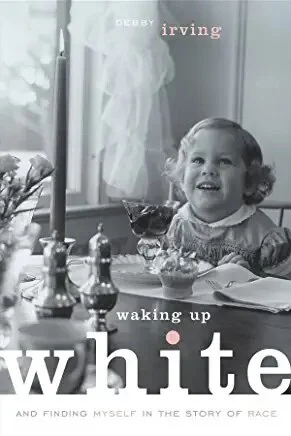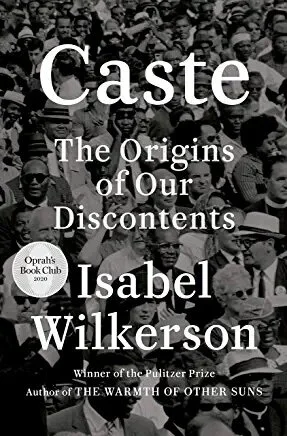A second list of steps toward racial healing, and these may cost more
Last week’s post offered several possibilities for white folks who want to do more than talk about racial justice. Almost all of the ideas there came from several Facebook friends who responded when I asked for feedback.
As I wrote last week, I’m pleased by so many good ideas from such a diversity of people, too many to share in one post. Here are more.
Keep learning
Even though study alone is not enough, the need to keep learning will never end. There’s history to discover we may not have known. There are perspectives to hear we had not considered. The following resources will encourage and strengthen your resolve to act.
Disclaimer: I had read or watched the few resources I recommended two weeks ago. Virtually everything below is new to me. You may find something here you don’t agree with, and that’s OK. In every contentious social issue, we do well to intentionally consider ideas that challenge our longtime thinking. But I feel pretty confident there’s something here to help each of us.
Books and videos
Be the Bridge, by Latasha Morrison
Caste, by Isabel Wilkerson
How to Be an Anti-Racist, by Ibram X. Kendi
How to Fight Racism, by Jemar Tisby
Me and White Supremacy, by Layla F. Saad
Waking Up White, by Debby Irving
White Awake by Daniel Hill
Russ Howard, a preacher in London, Ontario says he’s increased his reading of African- American Bible scholars, theologians, and preachers He especially recommends Willie James Jenning’s commentary on the book of Acts and the preaching of Dr. Charlie Dates and Dr. Derwin Gray.
“White Panel,” a video roundtable with several whites and a Black moderator, is a series within a regular YouTube feature, “The Table with Anthony ONeal”
Beyond the Bookshelf
Be the Bridge is more than just the above book with the same title; it’s a nationwide movement, gathering people to understand and heal their racially based differences. There is a national website and a Facebook group which has spawned local Facebook groups all over the country. Several who responded to my post say participation here has deepened their understanding.
Third Option Similarity Training, is a course used by Steven Chapman, a preacher in Chicago, with his multiethnic congregation.
Join a group. Take a course. Dig a little deeper.
Melissa Altman suggests digging a little into the history of your town or state. When she did this where she lives (Evansville, Indiana), she was astounded at the record of lynchings and system-sponsored housing discrimination recent enough for some still alive to remember.
The Equal Justice Initiative “works to end mass incarceration, excessive punishment, and racial inequality.”
Invest
After studying, talking, and meeting, many Christians decide to put their money where their heart has gone. Maybe some reading this are ready to share financial resources to improve situations that so often are marked by financial struggle
Spend
Aaron Monts, a pastor in Seattle, Washington, said his church is doing something any ministry or family could do, invest with black-owned banks or patronize black-owned businesses.
Katie Rupp, a schoolteacher in Louisville, Kentucky, is “very intentional about buying lots of diverse books for my classroom and my girls and for gifts,” she writes. “And not just biographies and stories about segregation. Black kids go to the dentist and are afraid of monsters too.”
Linda Doan, a professor retired from teaching at Milligan University, lives with her husband on acreage outside Johnson City, Tennessee, where she “learns from and supports” black agricultural groups, such as The Black Church Food Security Network, Southside Blooms, Soul Fire Farm, and Ohio City Farm.
Empower
Emily Hill, a campus minister at University of Cincinnati suggests donating to organizations that empower leaders of color such as The Voices Project or The Witness.
Brian Mavis, president of America’s Kids Belong, wrote, “I know of no other ministry or work that provides more opportunities for intimate racial relationships than foster care. I’ve seen churches become more multiethnic almost solely through their commitment to foster care and adoption. I know Black families who have fostered and adopted white children, and I know white families who have fostered and adopted Black children. These parents are living—and fighting—for racial reconciliation every day. These families are influential. They create curiosity. They open hearts and minds.”
If you lead or have influence with your company or ministry, follow the example of others who are working for diversity at an institutional level.
Point president Dean Collins prays with students on campus.
Christian colleges are a good example. Last week I shared Scott Caulley’s testimony that faculty members at Kentucky Christian University in Grayson, Kentucky are choosing textbooks that support black authors and lead students to something beyond an all-white perspective. Most Christian colleges, in fact, are taking steps to foster racial healing. One example is Point University, West Point, Georgia; their recent Black History Month virtual chapel challenged their campus and could help any of us. Another is Johnson University, Knoxville Tennessee and Kissimmee, Florida; among a long list of diversity initiatives is the announcement of creating and recruiting a leader for their Center for Multicultural Student Affairs.
It’s likely we could fill a blog post with similar initiatives at other schools. If the university you know could do more, point its leaders to the Council for Christian Colleges and Universities and its wealth of resources designed to “help the Christian higher education community address issues of racial and ethnic diversity.”
Meanwhile, I’ve talked with the president of one parachurch ministry that will soon announce plans to form a fund designed solely to develop Black churches and new Black church leaders. Contact me if you’d like more information. It’s challenging to imagine what could happen if many local congregations or ministries banded together in similar initiatives (or supported this one when it’s ready).
Reflect
The possibilities I’ve listed here and last week are only the beginning. You probably know others, and those committed to act as God’s agents of reconciliation will find a way. No ideas is not the biggest problem.
The first issue is the heart. Efforts at justice inevitably decay or diminish when its advocates fail to keep their hearts responding to God (and not self). Getting this right requires regular check-ups.
Jordan Dillon shared a graphic from SurgeryRedesign (shown here) I found most helpful. Download your own copy here. It explains that a person becoming an antiracist moves from fear (“I deny racism is a problem”) to learning (“I educate myself about race”) to growth (“I sit with my discomfort”). I can find myself in each of these categories, but not often enough in the last one.
Nick Salyers, associate director with Medpace, a clinical research organization, helps me here as I consider his response to my Facebook request for input:
“I’ve committed to asking myself why. Why did a certain person make me feel the way I felt? Why did I jump to a specific conclusion without having all of the facts? Why did I laugh at a joke that was borderline inappropriate? Why do I allow family/friends to be and or act with prejudice in my company? I’ve learned I can’t control or change anyone but me. So I’m starting with me.”-
Nick reminds us of the right place to begin, and I believe it’s the right place to end my four-week series on the topic of racial healing. “Create in me a clean heart, O God.” If I’m ever to help repair America’s racial divide, this is the prayer I must offer daily.
To receive daily posts delivered directly to your inbox, complete the form at the bottom of our home page.
To download a printable version of today’s post, click here.
Scrabble tiles photo by Brett Jordan on Unsplash







